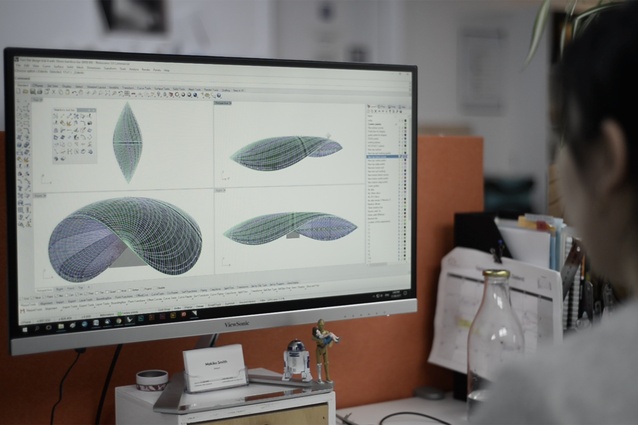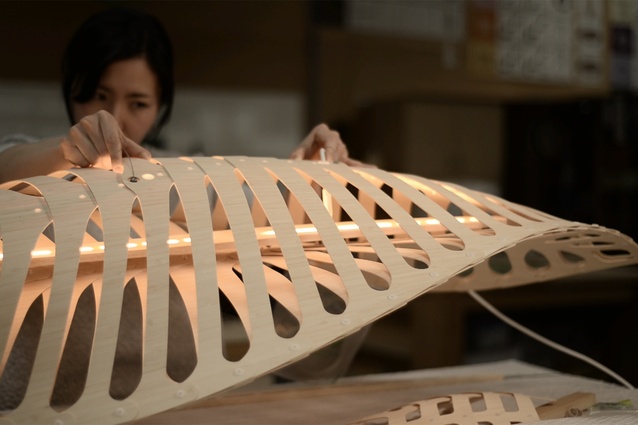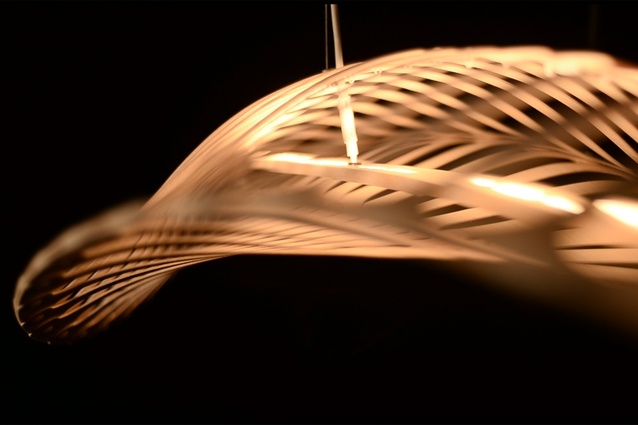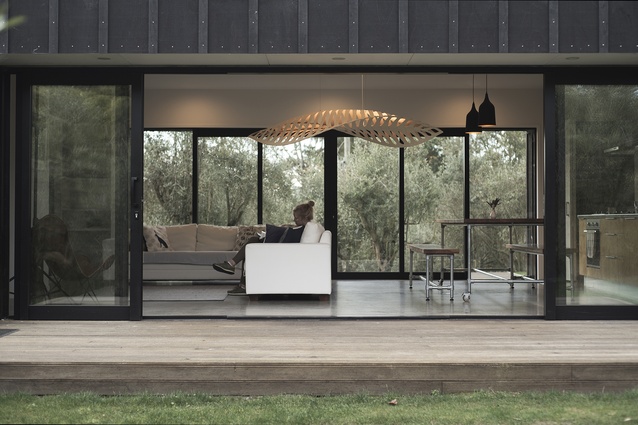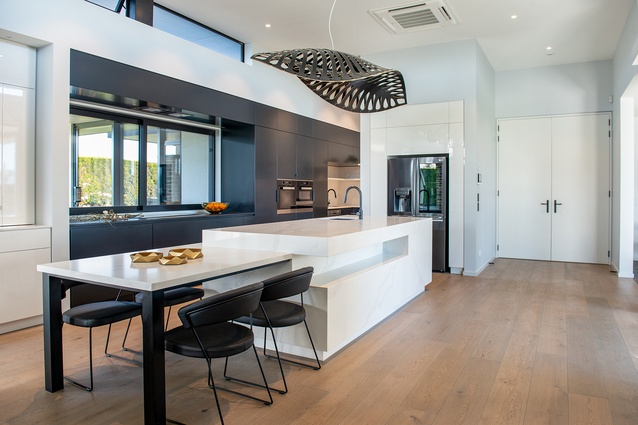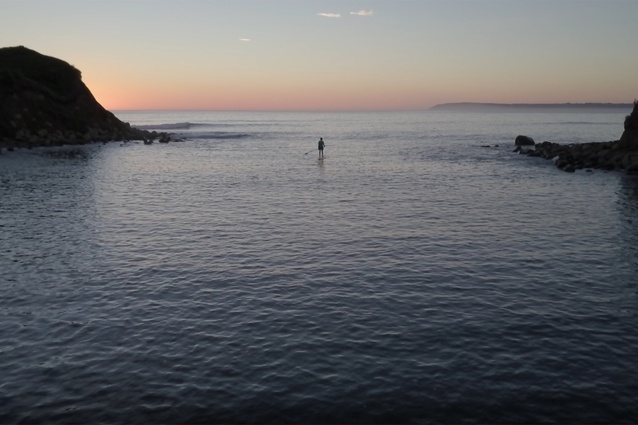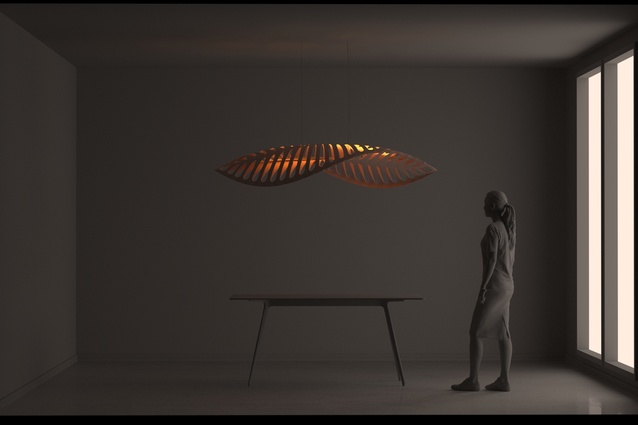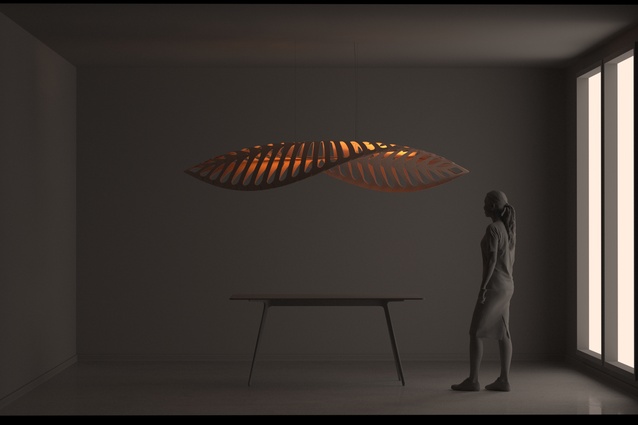Behind the Object: The Navicula light
David Trubridge is well-recognised for his distinctive lighting designs and the considered and sustainable materialisation of his product range. Trubridge's wonder and respect for nature has manifested into meaningful and aesthetically enduring pieces whose genesis is deeply entwined in his relationship with the natural world. In this instalment of Behind the Object, we revisit one of David's celebrated lighting designs — the Navicula — and learn of its connection to our largest ecosystem.
Jacinda Rogers (JR): I understand the Navicula light was inspired by microscopic diatoms that live in the ocean. What got you interested in these tiny life forms?
David Trubridge (DT): I have always been very close to the sea, especially after sailing on our [family’s] yacht from Europe to Aotearoa. I also love the structures and patterns of growth found in nature. When I discovered the world of diatoms I was entranced. And now, with our destructive effects on the ocean becoming ever more apparent, I wanted to draw attention to the importance of all plankton: they generate more oxygen for us to breathe than all the forests on the land.
(JR): Was there something in the form or function of the Navicula diatoms that you wanted to bring out in the design?
(DT): The variety and complexity of diatom growths is fascinating, but we chose Navicula for its promising form that looked like something we could make. Its function is, as mentioned above, in generating oxygen.
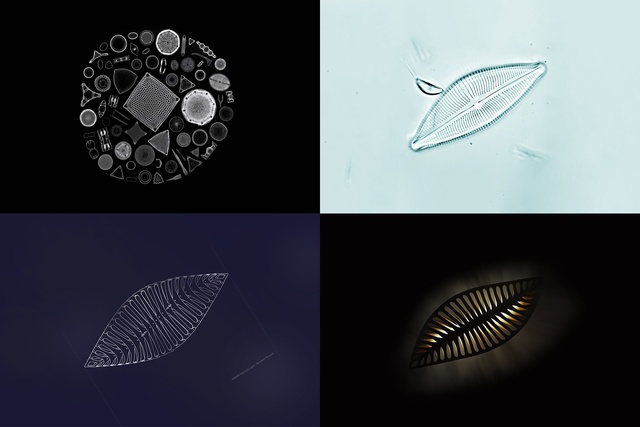
(JR): Once you have a source of inspiration, how do you begin the process of creating a light form from it?
(DT): I believe in drawing by hand before starting to use a computer, as this allows free-hand expressionism which is impossible in a computer programme. Once we have a feel for what we want we will create a 3D model in Rhino, where further development will take place as we get a better feel for the form. I usually have a piece of the intended material at hand to keep me based in the real material world. It is very easy in a computer programme to lose sight of scale and material properties.
(JR): This particular design, even though it’s intricate like many of your other designs, appears more complex in structure. Did it go through many iterations to get to its final form?
(DT): Yes this design is different in that it is not a single surface like a sphere or ovoid, it is two separate surfaces joined along two edges. This did require more testing and learning on our part. There are always lots of iterations, even with the simplest of designs.

(JR): When starting the prototyping process, do you tend to have a clear idea of what you want to achieve, or do you let the making process inform the final design?
(DT): Yes, we do of course have our own clear ideas at the start, but it is important that these are not dogmatic — as this design showed us. We originally planned and drew it without the twist. But the fact that the ply has a grain which causes it to bend more in one direction than another, made it twist when we assembled it. The dogmatic designer would have discarded it as a failure, but we said, oh no that is much better. It is as if the design itself wanted to be like that and we needed to listen.
(JR): What are the extra considerations you make when taking a sculptural form like this and transitioning it into light fitting?
(DT): We have to consider the light output, how the shadow patterns will play out, where we will put the light source and what sort of light source it is, while being aware of certification requirements such as separation of wood and luminaire, suspension solutions, etc. In this case, we had to design a special housing for the LED strip which makes it more expensive than the conventional E27 bulb holder.

(JR): Other than being beautiful, what other qualities do you aim for with your lighting designs?
(DT): One key quality in all our lights is patterning. This is not just gratuitous. It has been proven in research by a scientist in Portland, Oregon (whom we have worked with) that humans respond most favourably to patterns that have the closest fractal density to that of nature. In other words, we are calmed by trees and tree-like shadow patterns, and we are stressed by blank white walls! The most feedback we get is how much people love the shadow effects our lights generate. You can transform a whole room at night just with one light, and it makes you feel better. The function of Navicula is primarily aesthetic — it is not a task light.
(JR): Did launching this design in 2017 have any roll-on effect for your business?
(DT): Navicula has been our most successful larger-scale light — far more than we expected. For every one sold we have donated $50 to Sustainable Coastlines to help with their campaign to clean up our ocean and beaches.

Learn more about the David Trubridge product range at davidtrubridge.com.



